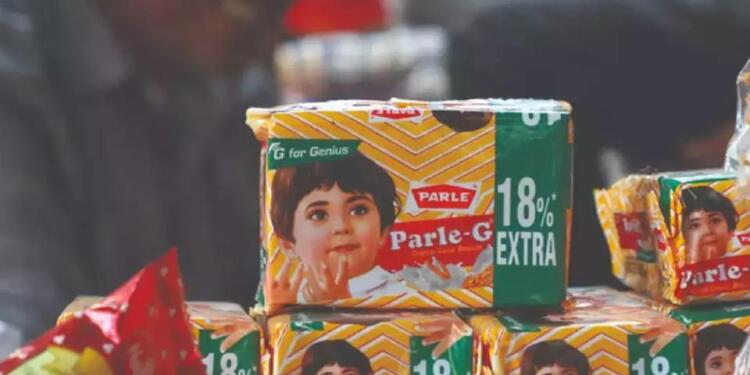The market is driven by a liberal bent of mind. People constantly look for innovations in their favourite products. If that is not met, they end up ditching it and do not even have a conscious realization about the same. Parle-G, the favourite brand of the majority of grown-up adults today is looking towards this exact bleak future. There is now a real possibility that their owners will stop producing it in the upcoming decades.
For the last few decades, Parle and Britannia are fighting neck and neck for grabbing lion’s share of India’s Biscuit market. The last 5-6 years have been particularly spectacular as both brands seem to be involved in a cat and mouse game. In pre-pandemic times, Britannia seemed to be gaining an edge, but Covid-related lockdowns revived Parle-G’s fortunes. However, this could be the last victory lap for Parle-G. To understand it, let’s trace its history and gauge its future track. Additionally, we will be also having a brief look at broader market trends for clearer perspectives.
Initial journey was difficult
Parle brand was established in 1929 when a silk trader named Mohanlal Dayal brought a closed factory in Mumbai’s Vile Parle. He started producing confectionaries from the factory. The folk theory is that Mohanlal and his family were so much involved in the production process that they forgot to name it. Later, it came to be known by the place of origin of its products. 10 years later, the factory started producing Biscuits.
But, the initial journey was difficult. In those days, biscuit was a luxury item in India. The expensive biscuit market was dominated by United Biscuits, Huntly & Palmers, Britannia, Glaxo, and other foreign companies. Parle wanted to make biscuits available to every Indian.
Read more: How Baba Ramdev catapulted a bankrupt company into a profitable venture
Fame spread through the word of mouth
But, marketing was difficult due to budget constraints. Additionally, marketing costs would increase the final price of the product. The problem was solved by the Second World war. Initially, they launched military-grade biscuits to cater to the immediate needs of the British Army fighting in World War II. The Army contained both British and Indian soldiers. The word of the mouth started to spread and Parle established its goodwill among the masses. Soon, the Glucose version of the biscuit was launched for consumption by the average Indian.
Parle Glucose was so trustable that after our political independence, when it appealed to people to support its production of barley biscuits, instead of wheat, people wholeheartedly remained patient. But, the floodgates opened by Parle made way for its other competitors as well. By, the 1960s, many other companies had launched affordable Glucose biscuits. Britannia had come up with its own Glucose-D while other smaller brands had developed copycat of Parle Glucose with minor variations in the final product. The low literacy rate meant that gullible customers got fooled and the phenomenon started eating into Parle’s market share.
Had to deal with dirty tactics
It was the first big setback for Parle Glucose. To counter this menace, the company tried a lot of strategies. It patented its packing machinery and launched a special type of packing with yellowish wax paper. The photo of a little girl was imprinted on it. That little girl is still there. A decade little, this strategy did prove to be effective in curbing duplication, but it was not decisive. So, in 1982, Parle Glucose changed into Parle-G. G standing for Glucose. Additionally, to make the product more affordable, the packing material was changed to low-cost printed plastic. The brand came up with a cheeky tagline “Often imitated, never equaled”.
Parle expanded its distribution network in rural India. The company holds humongous reach in the hinterlands of the country. By 2012, its distribution network covered six million retail stores. The number is expected to clock well over 10 million in the wake of increased competition between it and Britannia.
Read more: Parle-G was never serious about firing workers, it was just blackmailing tactic for tax cuts
Diversification did not help much
Up until the LPG reforms in 1991, it did not feel more heat other than that from Britannia. Its strategy was simple, sell the same product in different packaging, brand them with each price tag, serve different classes of people and sell them through huge distribution networks. So, a pack costing 2rs to your pocket would be good for breakfast for a small child. Similarly, a pack costing 10rs is good for migrant labourer looking for some energy during his working hour.
But, over a period of time, the brand became too much complacent. It did not innovate much. Parle-G did not understand that the consumption pattern is changing. After 1991, Indians’ consumer spending capacity increased many folds. Through PM Vajpayee’s infrastructure push, Parle enhanced its network but it did not grasp the extent of changing needs. Lately, Parle did diversify its biscuit portfolio by launching biscuits like Krackjack and Monaco, but they failed to replace Parle G as the numero uno product of the company.
Britannia’s aggression and Covid-19 resurrection
On the other hand, Wadia Group-owned Britannia increased its CAPEX. The brand which was mainly correlated with Urban consumption started to earn the trust of rural India as well. Other than increased CAPEX by the company, prosperity and financial inclusion were two of the other big causes which prompted the growth of Britannia in rural India. People could now spend a bit more on it and Britannia provided them with more options than that of Parle G. People familiar with the unique packaging of Parle G were now seeing different kinds of attractive packages in Britannia’s products such as Good Day, Nutrichoice Cream Crackers, Nutrichoice Thin Arrowroot milk Bikis, Atta Biscuits among others. In 2020, Britannia gained a 5 percentage point lead over Parle products.
Read more: Riding on Modi govt’s spending, rural India is consuming more than big cities
But, then came covid-19 and it gave another opportunity for Parle to resurrect itself. Workers migrating to rural India started to prefer Parle G over tad expensive other biscuits. A particular packing for Parle G costs as less as Rs 2. As a result, the gap between Parle and Britannia started to narrow.
Tough for Parle-G to stay relevant
But, Britannia did not get disheartened. Even during the Pandemic, when supply chain disruptions were at all times high, Britannia launched 3 new categories named launched three new categories – Salted Snacks, Croissants, and Cream Wafers to grab more portion of Rs 62,000 crores of biscuit market in 2025.
It is increasing its CAPEX spending and is poised to spend additional Rs 200 crore to Rs 300 crore every year. It is also expanding its outlets by adding 2 lakh to 3 lakh outlets every year to the already existing 2.2 million outlets. The company is also strengthening its distribution network through platforms like Swiggy, and Dunzo among others.
Parle is facing the heat. Pandemic was probably the last chance for it to revive Parle G. Consumers are now complaining that they are not getting the same crisp taste that they used to get earlier. Parle needs to understand that biscuits will soon cease to serve the nutrient needs of consumers. Even today, it is by and large a snack product. If Parle does not adapt to changing demands, then Parle G will have to go extinct.
Support TFI:
Support us to strengthen the ‘Right’ ideology of cultural nationalism by purchasing the best quality garments from TFI-STORE.COM
































